- Home
- Tom Clancy
Airborne: A Guided Tour of an Airborne Task Force Page 20
Airborne: A Guided Tour of an Airborne Task Force Read online
Page 20
Another huge and limiting problem is the matter of supplying all of these high-technology gadgets with electrical power. Just as the ancient battlefield was littered with spent arrows and broken javelins, tomorrow’s battlefield will likely be littered with depleted batteries. All the portable electronic wonders described in this chapter ultimately depend on batteries, and as any laptop computer user can tell you, few areas of technology have proven so resistant to radical breakthroughs in performance. Lead-acid and alkaline batteries have been slowly replaced by rechargeable NickelCadmium (NiCad) cells, and these in turn are giving way to Nickel-Metal Hydride (NiMH), Lithium Hydride (LiH), and newer types. However, the proliferation of new, non-standard battery types creates a nasty logistics problem, especially for foot soldiers who already have to carry everything they need. The Army currently stocks almost three hundred different types of batteries. Unlike a satellite, a soldier cannot be covered with solar power cells, especially if he fights at night or in the shade. The soldier needs food and water to live, ammunition to fight, and spare batteries to communicate, and these requirements all compete for space and weight in his rucksack.
To begin any improvement plan for the soldier of the future, the Army first needed to set goals for what they wanted to attain. If these goals are reached, the Army leadership feels that they will be more than able to overmatch and defeat any known or imagined infantry force well into the next century. The goals are broken into five general areas:• Lethality: The Army wishes to increase each soldier’s ability to detect, acquire, identify, locate, engage, and defeat enemy/ threat soldiers and their equipment at increased ranges. They would like to be able do this with greater accuracy and in all kinds of weather, regardless of visibility conditions.
• Command and Control (C2): Here the Army has set the goal to increase each leader’s ability to direct, coordinate, and control personnel, weapons, equipment, and information. To accomplish superior C2, the Army has also set goals on developing the procedures necessary to assimilate and disseminate information through the digitization of nearly every battlefield system. This will enable soldiers to completely dominate and win tomorrow’s “information war.”
• Survivability: In this key field, the Army has aimed to increase each soldier’s ability to protect himself or herself against the effects of enemy or threat weapons as well as environmental conditions through improved situational awareness, reduced signatures (infantry “stealth”), and improved physical protection systems.
• Sustainment: This goal calls for working towards a better capability to sustain soldiers in a tactical environment. From the Army’s point of view, not only does this lead to improvements in morale, but it also results in a dramatic increase in overall effectiveness and performance.
• Mobility: The Army of the future would like to move and deploy its soldiers around the battlefield more quickly than it currently is able to do. It must do this in order to fulfill all of its assigned missions. This element includes providing soldiers with improved situational awareness, navigation/location systems support, improved load-carrying gear, as well as a reduction in the weight of weapons, equipment, and supplies.
In addition to these five goals, the current modernization plan for the soldier of the future can be broken down into two more basic time-related categories. First there is the near-term project. This is what is known as the Soldier Enhancement Program or SEP. Back in 1990, Congress decided that the Army and Marine Corps should begin to focus their attention on enhancing the combat capabilities of individual dismounted soldiers through a program known as the Soldier and Marine Enhancement Program (SEP/MEP). The SEP/MEP program was intended to be a short-term study illustrating what can be done to improve the capabilities of the infantry soldiers in the near future.
SEP/MEP essentially stopped just short of any dramatic advances in ground combat. These dramatic advances would be reserved for the 21st Century Land Warrior Program, which will be discussed next. Congress directly funded the SEP/MEP program for three years. Through 1996, many important new technologies have been developed and are still being developed for the dismounted soldier of the future, including the beginnings of several important programs. Let’s take a look at some of the near-term projects which were worked on in the SEP program:• Close Combat Optics (CCO): This system, which is currently just beginning to enter service, provides a non-magnified sighting device for the M16A2 rifle and M4 carbine. It basically provides an aiming dot on a lens seen by the infantryman. It reportedly can improve combat marksmanship dramatically, and will also allow a soldier to fire at a target with both eyes open in order to provide him with increased situation awareness.
• Monocular Night Vision Device: This system, which has not yet been funded for procurement, was funded for type classification during FY-95. This lightweight device is actually a monocular, third-generation image-intensification system which can be handheld or helmet-mounted. It can even be attached to a weapon such as an M16A2. The system has performance characteristics roughly equal to that of the AN/PVS-7B night-vision goggles.
• Lightweight Leader Computer: The lightweight Leader Computer (LLS) is actually the precursor to the more powerful computers which may be carried by the soldier of the future. The LLC is a small, lightweight computer system which ties in with the computers of leaders up the chain of command in order to paint a more complete picture of the battlefield. The LLC can help plan for operations as well as the preparation and distribution of orders, reports, and alert messages. The system also possesses simple graphics capabilities, and provides an interface with SINCGARS for transmission of whatever data you’d like to transmit. As of now, the LLC has yet to be funded for production.
The above three systems are just a few of the new technologies which came about as a result of the near-term/quick-results study called SEP.
21st Century Land Warrior
The next step in developing the combat force of the future has now passed to what has become known as the 21st Century Land Warrior, or 21 CLW. The 21 CLW program is actually a vision of what the Army of the long-term future will (perhaps) look like, and begins tracking what the U.S. Army needs in order to get ready for tomorrow. Thus the 21 CLW is not a single program, but rather a series of high-tech initiatives which will (hopefully) produce usable technologies which will dramatically enhance the combat capabilities of tomorrow’s foot soldiers. Because the 21CLW is such a wide-ranging project, the Army realized that it had to be broken up into several projects in order to more clearly accomplish its goals. The 21CLW project is charged with the job of illustrating exactly what is, and what is not, feasible for the Army of the next century. The cornerstone of the 21CLW project is what has become known as the Army’s Generation II Soldier Advanced Technology Demonstration (ATD). The goal of this project is to test the current limits of technology, in order to determine just how high-tech and combat-effective America’s Army can become in the 21st century. The preeminent part of the current Generation II soldier system is the Individual Soldier Computer/Radio (ISC/R) subsystem. This is essentially a mini-computer which provides data for all aspects of the future infantry soldier’s sensor and weapons packages. The particular packages which are controlled by this computer may include an advanced headgear system that will integrate the following information:• Communications: This will include the ability to easily communicate between personnel, including messages from superiors and possibly information on enemy troop locations.
• Informational Displays: This will include pictures and diagrams on enemy weapon systems such as tanks, aircraft, and missiles in order to help alleviate IFF problems, and to aid intelligence-collection operations. Maps will also be easily accessed through this helmet display system, in order to help soldiers navigate the battlefield.
• Vision Amplifiers: The computer-controlled headgear will most probably include several types of advanced night-vision systems such as an FLIR or NVG-type system. High-power-magnification capabilities may incr
ease the usefulness of this day-night/all-weather sensor.
All three of these systems are envisioned to be operated via headgear fitted to the helmets of soldiers of the future. Before these projects reach the troops, however, there are many technical difficulties to overcome, not the least of which is a reduction in the weight of battery packs to power these high-tech systems. There are other projects, however, besides the ISC/R system which may create an equally dramatic change in the way soldiers fight. These include the following:• Objective Infantry Combat Weapon (OICW): The eventual replacement for the M-16 and the 40mm grenade launcher, probably using advanced composite materials and compact “telescoping caseless ammunition.” Prototypes may be demonstrated as early as 1998.
• Objective Crew Served Weapon (OCSW): The next weapon the Army is looking at would be used to replace such weapons as the M240G machine gun. The OCSW will be carried by two soldiers and will contain a laser range finder and a day/night sight. The weapon, as with the OICW, will be capable of firing both kinetic-energy and bursting munitions.
• Objective Sniper Weapon (OSW): Also to be replaced in future would be the U.S. Army’s series of sniper rifles. The OSW would serve this purpose and greatly increase effectiveness against personnel and matériel targets at significantly increased range.
• Integrated Sight Module (ISM): The ISM will combine an advanced thermal viewer with a digital compass, a “death dot” infrared laser aiming light, and a mini-laser range finder.
• Advanced Image Intensifier (AI2): Night-vision goggles with sharper resolution, a wider field of view, and “integrated HUD symbology.”
• Combat Identification for the Dismounted Soldier (CIDS): One of the lessons of Desert Storm was that ground casualties from “friendly fire” in mobile warfare can now be as heavy as those inflicted by the enemy, but far more demoralizing and politically unacceptable. The modern infantryman needs an idiot-proof gadget that will shout “Don’t shoot me!” to every friendly sensor, while remaining invisible to every enemy sensor. Technical details of the solution are obviously classified, but it probably involves some sort of low-powered radio frequency transponder using coded signals with waveforms that are inherently “LPI” (low probability of intercept). This might be similar to the CSEL (Combat Survivor/Evader Locator) radio carried by pilots, but the complexity of tracking hundreds of friendly soldiers mixed in among thousands of bad guys must challenge even the most advanced tactical computers.
• In-Stride Mine Avoidance System (IMAS): Land mines are weapons that wait, one of the nastiest scourges of the 20th century. Mines planted back in the First World War still kill or maim a few unlucky French and Belgians every year, and vast tracts of war-torn lands like Angola, Cambodia, and Afghanistan will be uninhabitable for decades thanks to the presence of millions of modern, hard-to-detect antipersonnel mines. Mine clearance requires either lavish expenditure of explosives, or infinite patience by large numbers of brave people probing the soil very gently. Mine avoidance is the only real solution. Ground-penetrating radars and infrared sensors, chemical sensors that sniff out minute traces of explosive or the unique signatures of disturbed soil, are being tried. Also, supersensitive magnetic detectors to pick up the few grams of metal in the detonator of a plastic-cased mine are being examined. Whatever the solution, it needs to be rugged, reliable, and light enough for an airborne trooper to carry and use. Oh, yeah, and we need it yesterday!
• RAH-66 Comanche Helicopter: Now we come to the biggest of the big. In terms of firepower and capability, the Comanche will perhaps add the biggest punch (with the possible exception of the now-canceled AGS) to the Army’s power. If one were to compare the life of this helicopter program to anything, it would probably be a roller-coaster ride. The ups and downs of this formidable (and expensive!) helicopter are many. The original plan was to purchase 5,000 of these advanced helicopters. By 1987, that number had been reduced to 2,096, and in 1990 the requested number was again reduced to 1,292.In 1991, a joint team made up of the Boeing and Sikorsky helicopter companies beat out a Bell/McDonnell Douglas team to be awarded the contract for the experimental version of the Comanche, known as the YRAH-66. Unfortunately, in late 1994, the Pentagon terminated production of the Boeing-Sikorsky Comanche program. Instead DoD decided to build just two pre-production prototypes and continue engine and equipment development.
The first flight of the #1 prototype of the new RAH-66A Comanche Scout/Attack Helicopter. The Comanche should replace a number of different Army helicopters in the 21st century.
OFFTCIAL U.S. ARMY PHOTO VIA BOEING SIKORSKY
The Army and the Comanche team then went into full gear to save their program. In early 1995, the Army succeeded in reviving the program, and as of now, the procurement plans call for six Early Operational Capability (EOC) RAH-66s, equipped with only reconnaissance systems (no armament). After several years of in-field testing, assuming all is successful, the Comanche will begin low-rate production, and even-tually full-rate production. Initial operational capability for the RAH-66 currently looks to be about the year 2006.
The entire cost of the Comanche program has been estimated to total around $34 billion. What exactly does the Army get for that amount of money? The answer is: the most advanced and deadly helicopter in the world.
The armament will be composed of a three-barreled 20mm cannon in an under-nose turret. Side-opening weapons bay doors will be used to conceal the internal armament and help to keep Comanche stealthy. Internally, the RAH-66 can carry up to six Hellfire air-to-surface missiles or twelve Stinger air-to-air missiles (or a combination of both). For additional weapons carriage, the Comanche can sacrifice some of its stealth for missiles, and carry four more Hellfires or eight more Stingers from stub-fitted wings. Auxiliary fuel tanks can also be carried to dramatically increase deployment range.
The avionics systems carried by Comanche are equally as impressive as the armament package. All major communications systems used by the RAH-66 will be jam-resistant, and the aircraft will have an airborne target-handover system, GPS, and a radar altimeter. The fire control and navigation systems, however, are what takes the Comanche into a world of its own. Consisting of a night-vision system and a helmet-mounted display, the integrated cockpit will have a second-generation FLIR targeting system, digital map displays, and a host of multi-functional displays which will help the crew examine information on fuel status, weapons remaining, and communications systems. To top this all off, all Comanche helicopters will be capable of carrying a miniaturized version of the Longbow radar, although current plans call for only about a third of the fleet to actually be equipped with it.
• Line-Of-Sight Antitank (LOSAT) Missile: LOSAT is the second major Army program which will have a profound impact on the XVIII Airborne Corps and the 82nd Airborne Division in particular. This missile system is a hit-to-kill weapon, designed to provide a high volume of extremely lethal kinetic-energy missile fire against heavily armored units such as tanks at ranges exceeding that of a main tank gun. The missile system itself, for which Loral Vought (also now part of Lockheed Martin) Systems of Dallas is the prime contractor, consists of four Kinetic Energy Missiles (KEMs) and their fire-control system, integrated into a Hummer chassis. The missile, when launched from its pod, begins maneuvering immediately. It is guided internally along the flight path and updated through the fire-control system aboard the launch vehicle. This continues until the missile strikes its target. As a result of tests conducted involving the firing of nearly twenty KEMs, it was determined that the missiles have a top speed in excess of 4,875 fps/1,486 mps. The missile will penetrate all known and projected MBTs, and can be used for engaging other targets as well, such as low-flying aircraft, helicopters, and bunkers.
Whether or not all of these systems will ever be fielded is anyone’s guess right now. Already, numerous other modernization programs like AGS and the liquid propellant gun for the new Crusader self-propelled howitzer have been killed by the budget ax. Whatever makes it
into service, though, will have to be light and tough enough to stand up to the toughest battlefields on earth. The ones trod only by infantrymen.
The Air Force Contribution
Airborne Warfare: The Air Force Legacy
Within the U.S. Air Force (USAF), there is a class structure not unlike that of the other services. Ever since President Harry Truman signed the enabling legislation back in 1947, the USAF’s “kings of the skies” have come from the fighter and bomber communities. The internal USAF bias against those who do not kill people with their aircraft has meant that the careers of non-fighter and bomber aircrews rarely reach beyond the rank of brigadier general. Perhaps the armed flying jobs seem sexier or more powerful than the jobs of those who fly the supporting missions. Whatever the reasons, wearing the Air Force uniform and not shooting down enemy planes or nuking America’s enemies has usually meant never rising to the top jobs within the USAF.

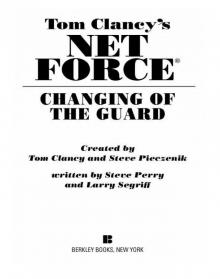 Changing of the Guard
Changing of the Guard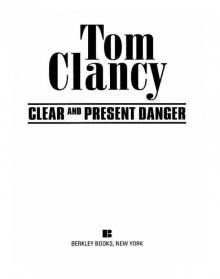 Clear and Present Danger
Clear and Present Danger Hounds of Rome
Hounds of Rome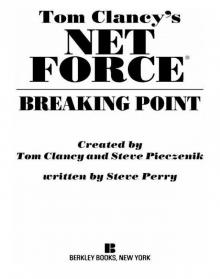 Breaking Point
Breaking Point Tom Clancy's Jack Ryan Books 7-12
Tom Clancy's Jack Ryan Books 7-12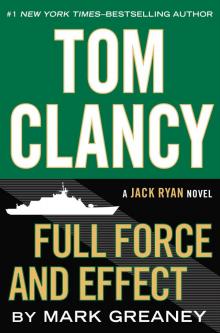 Full Force and Effect
Full Force and Effect The Archimedes Effect
The Archimedes Effect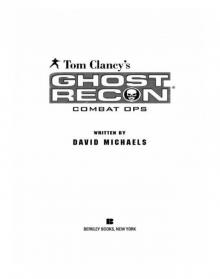 Combat Ops
Combat Ops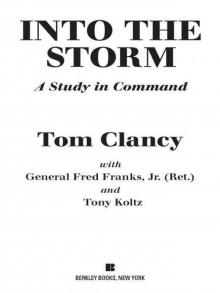 Into the Storm: On the Ground in Iraq
Into the Storm: On the Ground in Iraq Under Fire
Under Fire Point of Impact
Point of Impact Red Rabbit
Red Rabbit Rainbow Six
Rainbow Six The Hunt for Red October
The Hunt for Red October The Teeth of the Tiger
The Teeth of the Tiger Conviction (2009)
Conviction (2009)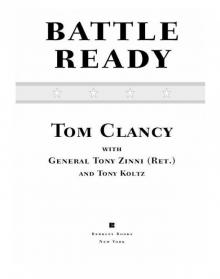 Battle Ready
Battle Ready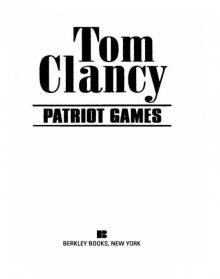 Patriot Games
Patriot Games The Sum of All Fears
The Sum of All Fears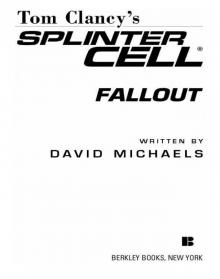 Fallout (2007)
Fallout (2007) Red Storm Rising
Red Storm Rising The Cardinal of the Kremlin
The Cardinal of the Kremlin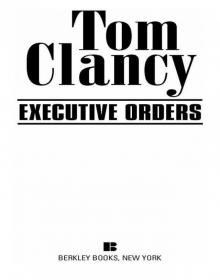 Executive Orders
Executive Orders Lincoln, the unknown
Lincoln, the unknown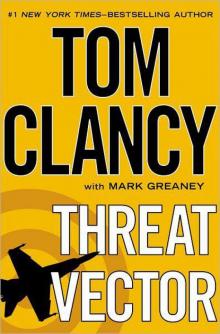 Threat Vector
Threat Vector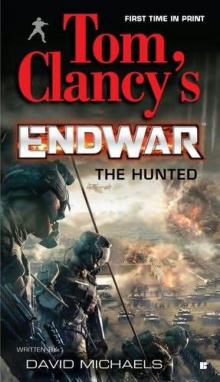 The Hunted
The Hunted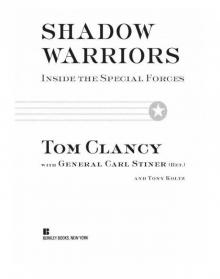 Shadow Warriors: Inside the Special Forces
Shadow Warriors: Inside the Special Forces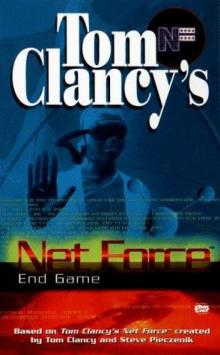 End Game
End Game Special Forces: A Guided Tour of U.S. Army Special Forces
Special Forces: A Guided Tour of U.S. Army Special Forces Locked On
Locked On Line of Sight
Line of Sight Tom Clancy Enemy Contact - Mike Maden
Tom Clancy Enemy Contact - Mike Maden Fighter Wing: A Guided Tour of an Air Force Combat Wing
Fighter Wing: A Guided Tour of an Air Force Combat Wing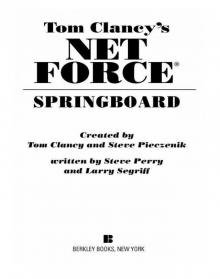 Springboard
Springboard Line of Sight - Mike Maden
Line of Sight - Mike Maden EndWar
EndWar Dead or Alive
Dead or Alive Tom Clancy Support and Defend
Tom Clancy Support and Defend Checkmate
Checkmate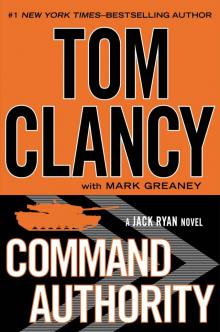 Command Authority
Command Authority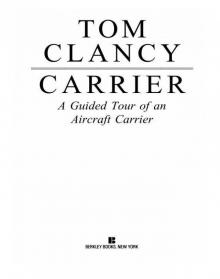 Carrier: A Guided Tour of an Aircraft Carrier
Carrier: A Guided Tour of an Aircraft Carrier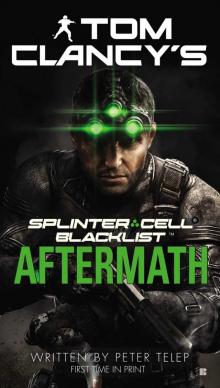 Blacklist Aftermath
Blacklist Aftermath Marine: A Guided Tour of a Marine Expeditionary Unit
Marine: A Guided Tour of a Marine Expeditionary Unit Commander-In-Chief
Commander-In-Chief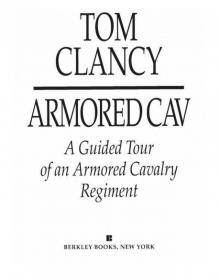 Armored Cav: A Guided Tour of an Armored Cavalry Regiment
Armored Cav: A Guided Tour of an Armored Cavalry Regiment Tom Clancy's Jack Ryan Books 1-6
Tom Clancy's Jack Ryan Books 1-6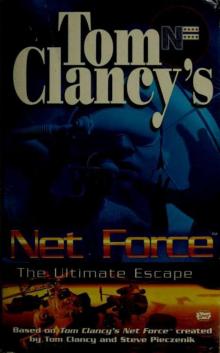 The Ultimate Escape
The Ultimate Escape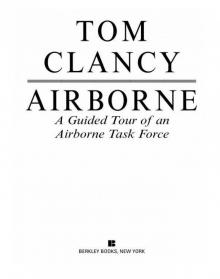 Airborne: A Guided Tour of an Airborne Task Force
Airborne: A Guided Tour of an Airborne Task Force Debt of Honor
Debt of Honor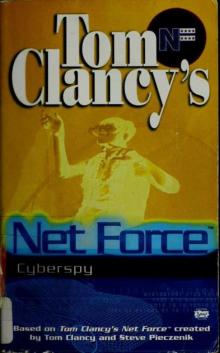 Cyberspy
Cyberspy Point of Contact
Point of Contact Operation Barracuda (2005)
Operation Barracuda (2005)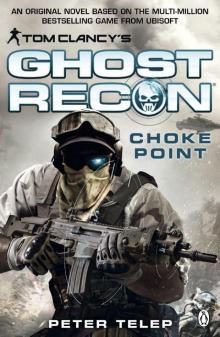 Choke Point
Choke Point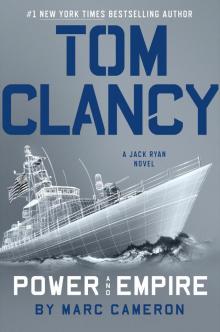 Power and Empire
Power and Empire Every Man a Tiger: The Gulf War Air Campaign
Every Man a Tiger: The Gulf War Air Campaign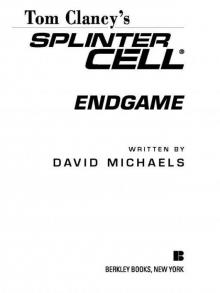 Endgame (1998)
Endgame (1998)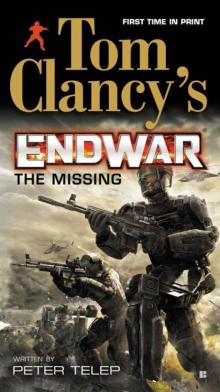 EndWar: The Missing
EndWar: The Missing Splinter Cell (2004)
Splinter Cell (2004) The Great Race
The Great Race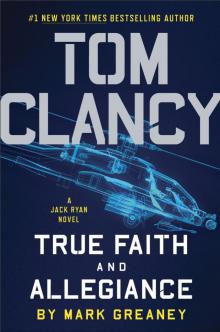 True Faith and Allegiance
True Faith and Allegiance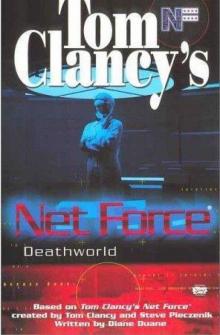 Deathworld
Deathworld Ghost Recon (2008)
Ghost Recon (2008)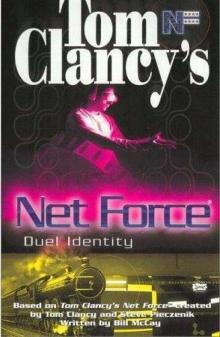 Duel Identity
Duel Identity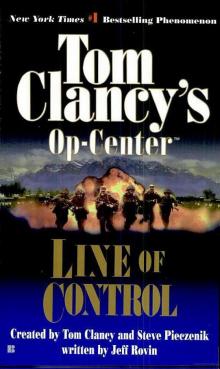 Line of Control o-8
Line of Control o-8 The Hunt for Red October jr-3
The Hunt for Red October jr-3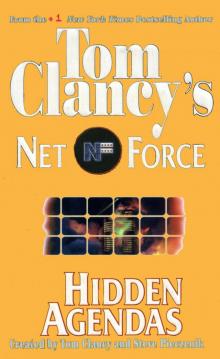 Hidden Agendas nf-2
Hidden Agendas nf-2 Acts of War oc-4
Acts of War oc-4 Ruthless.Com pp-2
Ruthless.Com pp-2 Night Moves
Night Moves The Hounds of Rome - Mystery of a Fugitive Priest
The Hounds of Rome - Mystery of a Fugitive Priest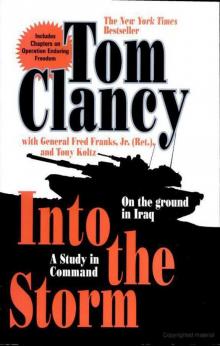 Into the Storm: On the Ground in Iraq sic-1
Into the Storm: On the Ground in Iraq sic-1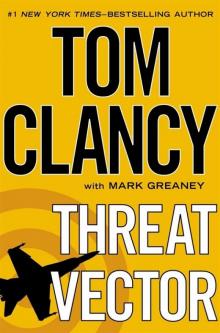 Threat Vector jrj-4
Threat Vector jrj-4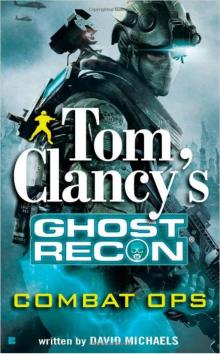 Combat Ops gr-2
Combat Ops gr-2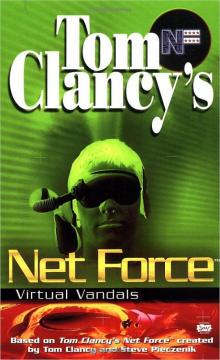 Virtual Vandals nfe-1
Virtual Vandals nfe-1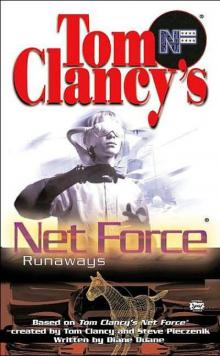 Runaways nfe-16
Runaways nfe-16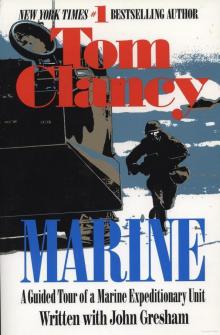 Marine: A Guided Tour of a Marine Expeditionary Unit tcml-4
Marine: A Guided Tour of a Marine Expeditionary Unit tcml-4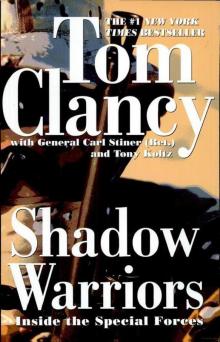 Shadow Warriors: Inside the Special Forces sic-3
Shadow Warriors: Inside the Special Forces sic-3 Jack Ryan Books 1-6
Jack Ryan Books 1-6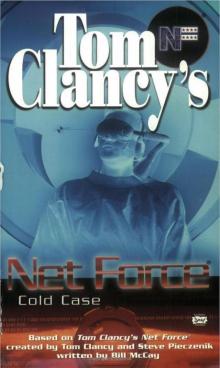 Cold Case nfe-15
Cold Case nfe-15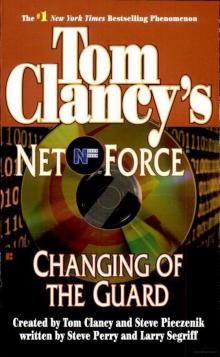 Changing of the Guard nf-8
Changing of the Guard nf-8 Splinter Cell sc-1
Splinter Cell sc-1 Battle Ready sic-4
Battle Ready sic-4 The Bear and the Dragon jrao-11
The Bear and the Dragon jrao-11 Fighter Wing: A Guided Tour of an Air Force Combat Wing tcml-3
Fighter Wing: A Guided Tour of an Air Force Combat Wing tcml-3 Patriot Games jr-1
Patriot Games jr-1 Jack Ryan Books 7-12
Jack Ryan Books 7-12 Mission of Honor o-9
Mission of Honor o-9 Private Lives nfe-9
Private Lives nfe-9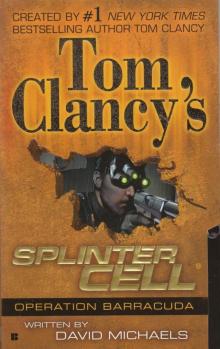 Operation Barracuda sc-2
Operation Barracuda sc-2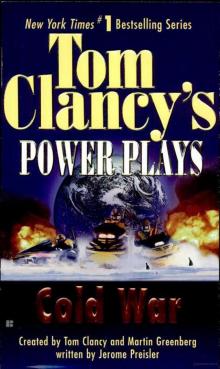 Cold War pp-5
Cold War pp-5 Point of Impact nf-5
Point of Impact nf-5 Red Rabbit jr-9
Red Rabbit jr-9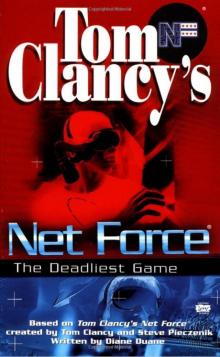 The Deadliest Game nfe-2
The Deadliest Game nfe-2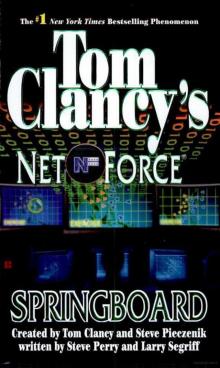 Springboard nf-9
Springboard nf-9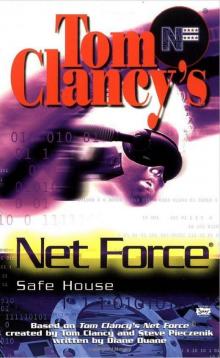 Safe House nfe-10
Safe House nfe-10 EndWar e-1
EndWar e-1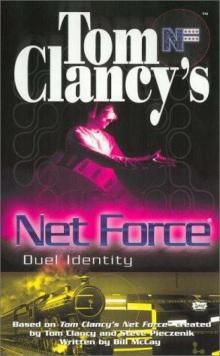 Duel Identity nfe-12
Duel Identity nfe-12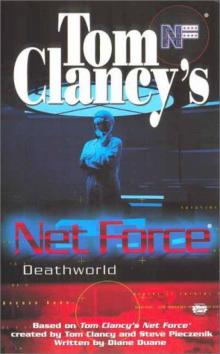 Deathworld nfe-13
Deathworld nfe-13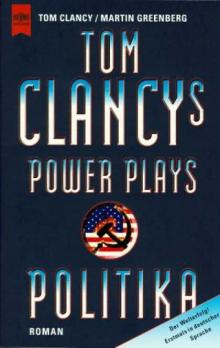 Politika pp-1
Politika pp-1 Rainbow Six jr-9
Rainbow Six jr-9 Tom Clancy's Power Plays 1 - 4
Tom Clancy's Power Plays 1 - 4 Endgame sc-6
Endgame sc-6 Executive Orders jr-7
Executive Orders jr-7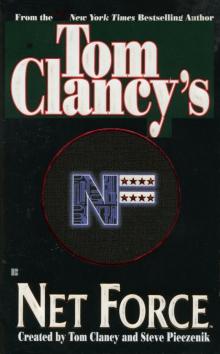 Net Force nf-1
Net Force nf-1 Call to Treason o-11
Call to Treason o-11 Locked On jrj-3
Locked On jrj-3 Against All Enemies
Against All Enemies The Sum of All Fears jr-7
The Sum of All Fears jr-7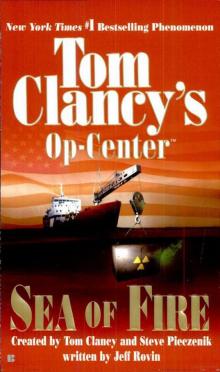 Sea of Fire o-10
Sea of Fire o-10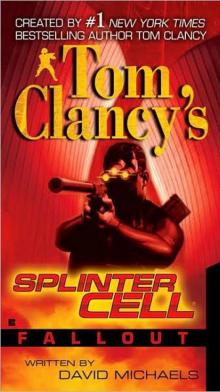 Fallout sc-4
Fallout sc-4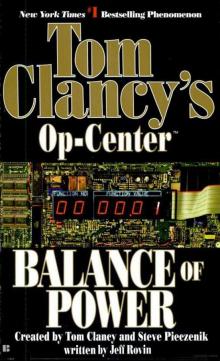 Balance of Power o-5
Balance of Power o-5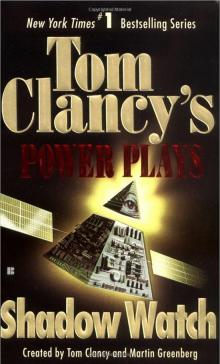 Shadow Watch pp-3
Shadow Watch pp-3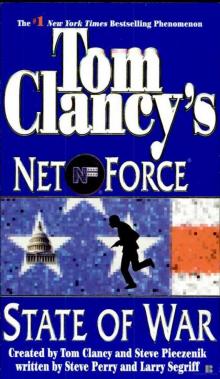 State of War nf-7
State of War nf-7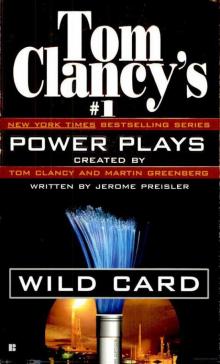 Wild Card pp-8
Wild Card pp-8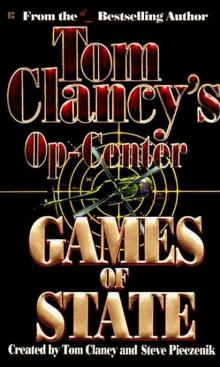 Games of State o-3
Games of State o-3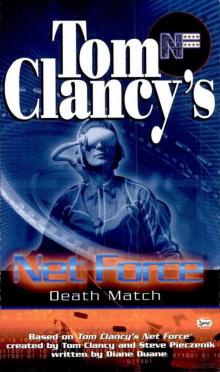 Death Match nfe-18
Death Match nfe-18 Against All Enemies mm-1
Against All Enemies mm-1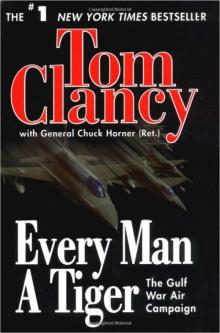 Every Man a Tiger: The Gulf War Air Campaign sic-2
Every Man a Tiger: The Gulf War Air Campaign sic-2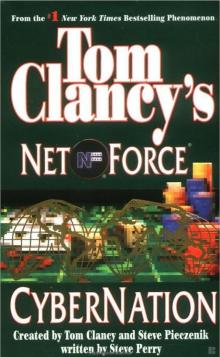 Cybernation nf-6
Cybernation nf-6 Support and Defend
Support and Defend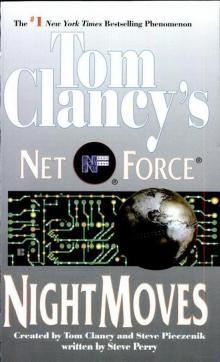 Night Moves nf-3
Night Moves nf-3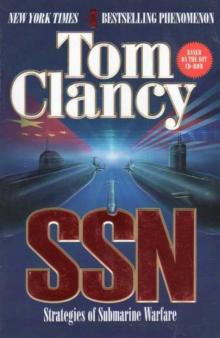 SSN
SSN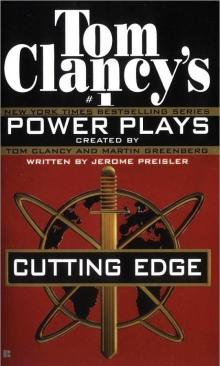 Cutting Edge pp-6
Cutting Edge pp-6 The Cardinal of the Kremlin jrao-5
The Cardinal of the Kremlin jrao-5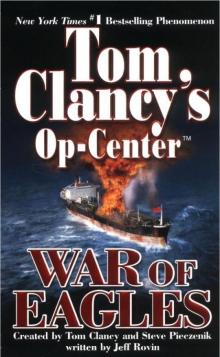 War of Eagles o-12
War of Eagles o-12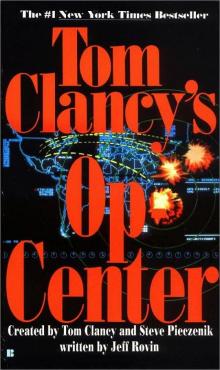 Op-Center o-1
Op-Center o-1 Mirror Image o-2
Mirror Image o-2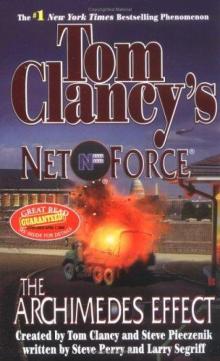 The Archimedes Effect nf-10
The Archimedes Effect nf-10 Teeth of the Tiger jrj-1
Teeth of the Tiger jrj-1 Bio-Strike pp-4
Bio-Strike pp-4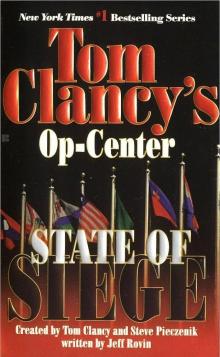 State of Siege o-6
State of Siege o-6 Debt of Honor jr-6
Debt of Honor jr-6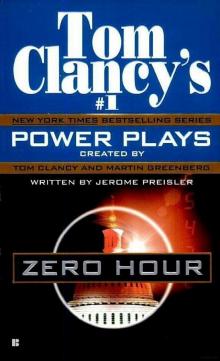 Zero Hour pp-7
Zero Hour pp-7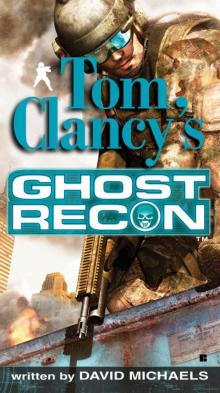 Ghost Recon gr-1
Ghost Recon gr-1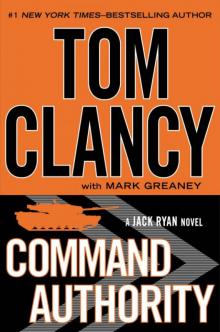 Command Authority jr-10
Command Authority jr-10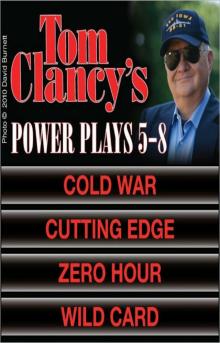 Tom Clancy's Power Plays 5 - 8
Tom Clancy's Power Plays 5 - 8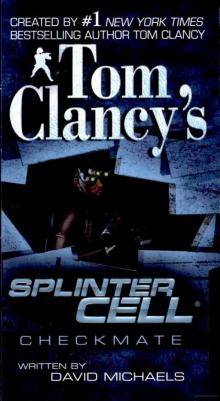 Checkmate sc-3
Checkmate sc-3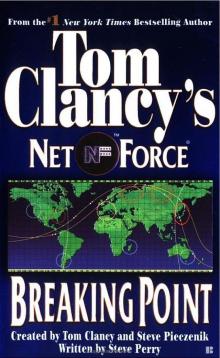 Breaking Point nf-4
Breaking Point nf-4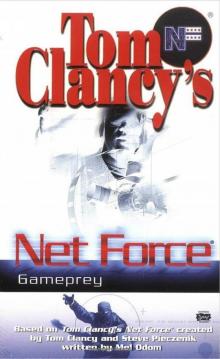 Gameprey nfe-11
Gameprey nfe-11 The Hunted e-2
The Hunted e-2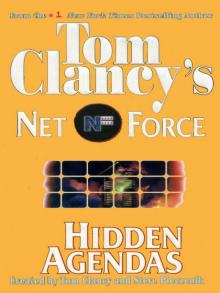 Hidden Agendas
Hidden Agendas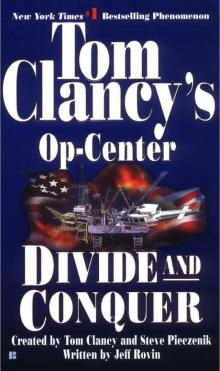 Divide and Conquer o-7
Divide and Conquer o-7